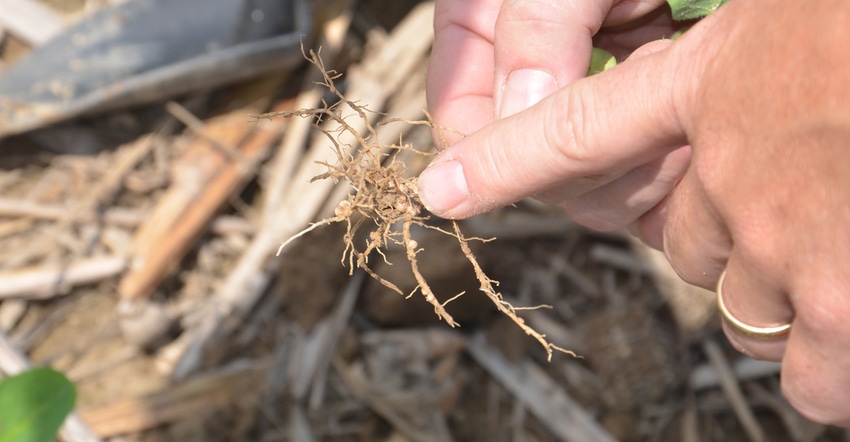
Corn planting depth has garnered lots of attention over the years. Universities and seed companies have conducted experiments to determine which depth is best. Most experiments have concluded that when in doubt, hedging to the deeper side pays when planting corn.
People tend to talk less about how deep to plant soybeans. Traditionally, most people have avoided deeper depths for fear of crusting and subsequent emergence issues. Steve Gauck believes the same maxim that works for corn — hedging your bet toward the deeper side when in doubt — might work for soybeans. He urges farmers to plant at least 1.25 inches deep and is happier with 1.5 inches. He says some customers have planted soybeans 2 inches deep successfully.
Gauck is a Beck’s sales agronomist, based near Greensburg, Ind. Beck’s sponsors Soybean Watch ’18.
More than emergence
The reason Gauck encourages farmers to plant soybeans at depths that they might consider to be on the deep side goes further than just concerns about even emergence. He believes there could be a tie to how quickly soybeans develop nodules. Bacteria inside these nodules are responsible for fixing nitrogen from the air and making it available to soybean plants.
Often soybean plants take on a yellow tinge at the V2 to V3 stage, until nodules become fully developed and bacteria fix nitrogen for the plant. Like corn, soybeans need nitrogen for that dark-green color. The difference is they get it from a different source.
“Bacteria are sensitive to soil temperatures,” Gauck says. “People who study nodulation say that it’s most active when soil temperature is in the low 70-degree [F] range. If soils get too hot, it can negatively affect the nodulation process.”
Impact all season?
Gauck believes it’s possible that since planting depth affects how deep roots form, and therefore how deep nodules develop, planting depth may have a lasting effect during the growing season. How your plants are reacting now and how much nitrogen they’re obtaining thanks to bacteria living in their roots could be tied back to planting depth.
“Soils can get really hot in that top inch or so during the hottest part of the summer,” Gauck says. “If more roots and nodulation is down another inch or so, say down at 2 inches below the surface, it’s likely going to be in cooler soil. That should favor nodulation, especially in the hottest part of the growing season.
“If seed was planted shallow and roots developed closer to the surface, nodules housing the bacteria that fix nitrogen are likely to be closer to the surface as well,” Gauck says. “When it gets hot and the soil at or near the surface is hot, nodulation may not be as effective.”
There is not a lot of evidence proving this theory, Gauck acknowledges. However, he believes that others are starting to think the theory makes sense. Paying more attention to planting depth and planting soybeans a bit deeper to encourage deeper rooting may be one of the small management changes you can make that results in a positive payback, he concludes.
About the Author(s)
You May Also Like




